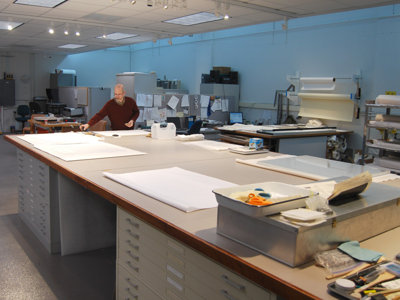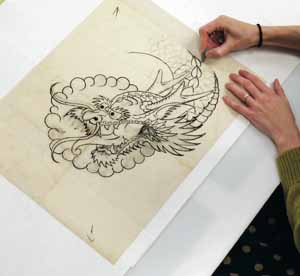p.MsoNormal, li.MsoNormal, div.MsoNormal { margin: 0in 0in 0.0001pt; font-size: 12pt; font-family: “Times New Roman”; }a:link, span.MsoHyperlink { color: blue; text-decoration: underline; }a:visited, span.MsoHyperlinkFollowed { color: purple; text-decoration: underline; }div.Section1 { page: Section1; }ol { margin-bottom: 0in; }ul { margin-bottom: 0in; }
ECPN MEETING MINUTES
February 17, 2011
Conference Call Attendees:
Carrie Roberts
Rose Daly
Ryan Winfield
Amy Brost
Heather Brown
Stephanie Lussier
I. Minutes
a. ECPN January minutes approved
II. ECPN Co-position for Education and Training
a. Carrie Roberts takes co-position with Amber Kerr-Allison; full transition of the position to Carrie will occur at the end of 2011.
III. AIC Meeting 2011
a. Angels Project (Ryan) – no updates. Contract with the site is pending.
b. ECPN attendees – several committee members plan on going. Heather posted room-sharing notice on Facebook. One person seeking to share accommodations so far, but more anticipated as the date nears.
c. Meetings – Business meeting and dinner scheduled. Registration brochure has full page on this. Brochure is also on the website available for download.
d. Related Facebook Group – Conservators in private practice or freelance Facebook group has a posting about meeting up at 2011 meeting. Rose will mention the ECPN dinner and invite them to join. Carrie added that she is looking to create a workshop for emerging conservators just starting out and going into private practice. Rose will invite Kirsten, Amber, and Carrie to be members of this group.
e. Portfolio Session Presenters – Via email, Amber notified the group that three of the four graduate programs have committed. Buffalo has 2 students available and added that the event could be expanded to provide a full introduction to all the schools, include professors, and perhaps even be open to local pre-program students who are not attending the AIC meeting. While this idea was well received, it also seemed overly ambitious for the first year of this event. Rose suggested surveying participants in this year’s portfolio session to see how it could grow in the future. Paper survey, or possibly collect email addresses and encourage people to complete an online survey (email would make it possible to follow up with them). Keep it straightforward this year, see how it’s received, then build upon it next year if there is a good response. Ryan added that there are a number of Student AIC member registrations already in, so student attendance is expected to be good. Exhibit hall is not open to the public, so it’s difficult to have people coming who are not registered for the annual meeting. Could consider a one-day exhibit hall pass or other special registration category if the portfolio session is opened to the public in the future.
f. Portfolio Session Outreach – Will be posted on Facebook. Rose suggested emailing Student members of AIC to notify them, which Ryan said could be done.
g. Poster – Amy is working on this, but requested file specifications before going further with the design. Printing will be done by AIC, with Amy delivering the file to Morgan for production. Ryan emailed Morgan to ask that she send Amy electronic file specs and delivery requirements.
h. Flier – Amy will add Carrie Roberts and Stephanie Porto. Karen’s position of AIC Board liaison may be transitioned by the time of the meeting, so indicate that position generically on the flier. Amy will send flier with all revisions except the new Flickr page URL to Ryan and Rose. Final approval next call for 4/1 deadline. [Correction of previous minutes – flier is single-sided color, not double-sided.]
IV. Outreach (Heather)
a. Blog – Jason Church willing to write a post – Heather says it can be challenging to identify writers. Heather will follow up with Jason to give him the green light.
b. Webinar – can work with Jason to stage webinars from Louisiana. Possible topics include how to build a portfolio. Ask portfolio presenters at the AIC meeting about participating in a webinar.
c. Flickr – ECPN images will be moved onto the AIC Flickr page. Jason needs to move his images. Ryan handled permissions. Rose to follow up with Ryan. Rose or Ryan to provide new URL to Amy to use on the flier.
d. AIC News – article about mentoring program (Heather) – Jane is writing it with her. Lisa provided a guideline of 500-1000 words. Will include a general introduction to the program, specifics on how the program works, and then will discuss Heather and Jane’s personal experiences. Heather will send the draft to Lisa and Morgan.
V. Communications (Amy)
a. AIC News – article about ECPN at the AIC annual meeting was approved on the previous call and Ryan forwarded it on by the 2/1 deadline for the next issue.
b. Wikis – Amy to follow up with Rachael Perkins Arenstein on ECPN contributions to the SG Wikis. Rose did the Wiki training if anyone has questions.
c. JAIC Peer Reviewers – Amy confirmed that Michele Derrick had enough volunteers and that she did not want to solicit more until there was a need. Rose proposed offering ECPN assistance with book reviews. Ryan indicated that there is one book reviewer at present, so this may be an opportunity area for ECPN. Amy to ask Michele.
d. Position descriptions – Rose sent Communications position description to coordinators and requested that the coordinators develop and maintain descriptions, as this helps with evaluating progress, formalizing committee structure and workflow, and facilitates transitions.
e. Repository/archive for ECPN documents – for Katie and Jason’s notes, proposals, posters, other committee documents. Ryan reported that AIC is exploring various platforms (ie, Dropbox, Big Tent, Yahoo! Group, etc.) and will determine which will be used by all specialty groups and committees. Ryan to advise, then committee members (current and former) can provide the documents to populate it.
VI. Education & Training (Carrie)
a. Recent E&T conference call – discussed ideas ECPN has for possible workshops to develop as part of AIC, including starting a private practice (with Kirsten Travers), grant writing, and publishing (how to publish in JAIC, blogs, other journals, etc.) Setting up a private practice is a workshop that would translate well into a Webinar – Heather will follow up with Jason. Carrie has sent ideas to Stephanie Lussier. Webinars are more permanent so it is ideal to create webinars along with workshops.
b. Research Database – CoOL doesn’t have capacity and isn’t searchable – Rose suggested discussing with Walter Henry. U. of Texas database may be transitioned to AIC, which would also provide a possible platform for the research database, and it contains research already. Concern that it’s pre-populated with the research of just one program. Do not want to give the impression of skewing emphasis within the database to one training program. All programs will help with vetting, so all must be on board with how new information is brought into it. Start with the idea of populating it with research from ANAGPIC.
http://www.ischool.utexas.edu/~anagpic/studentpapers.htm
VII. ECPN at AAM
a. Rose unable to attend AAM. For the future, this is an opportunity for networking and identifying areas for collaboration.
VIII. ECPN and ECC at ANAGPIC (Ryan, Stephanie)
a. Ryan can possibly set up the poster, since Stephanie cannot come to the conference. Stephanie advised via email that there may be a Queens student who can present, and an ECC representative. Rose sent Ryan her talk from last year. Ryan will be delivering remarks and may co-present with the representative from Canada, per Stephanie’s email.
IX. Publications Committee Update (Amy)
a. Amy participated in the January conference call, which centered around electronic publishing. Specialty groups each have their own processes. Each group is providing information on how they handle electronic publishing now (ie, post prints) and this will be used to develop a best-practices document. Considerable discussion on PDF vs. XML. PDF is faster, simpler, and less expensive, but XML is more versatile, and easier to migrate in the future.
b. The Architectural Specialty Group is looking to update its Wikipedia entry with volunteer help, possibly from ECPN. Ryan can provide them with a list cross-referencing architectural conservation and ECPN. Amy posted to listserv. Can also post to Facebook page and encourage ASG to reach out to the conservation graduate programs directly. Amy will circle back with Jenn Capetto of ASG.
Next conference call will be March 17, 2011 (St. Patrick’s Day) at 1PM ET.
Respectfully submitted,
Amy Brost








